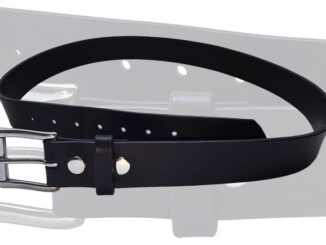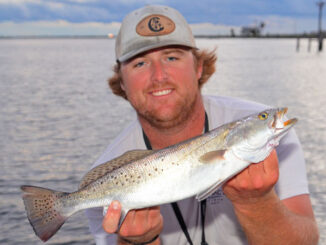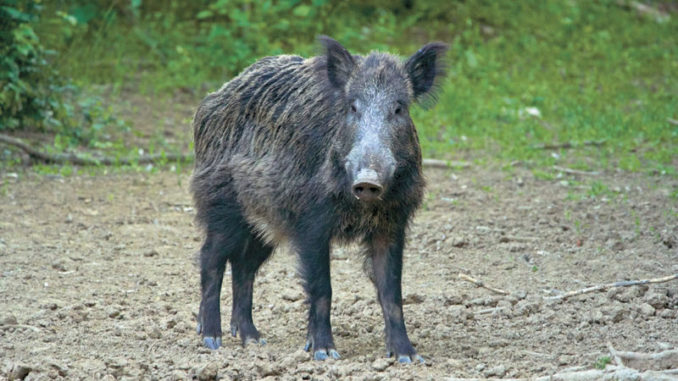
Hunters, landowners call for putting the cuffs on feral hogs
There’s no other way to say it.
Some things are just useless and nasty.
That’s the way most people who have run across feral hogs feel about the dastardly creatures. They are called wild boars, swine, piney woods rooters and — well, we can’t print other names they are called.
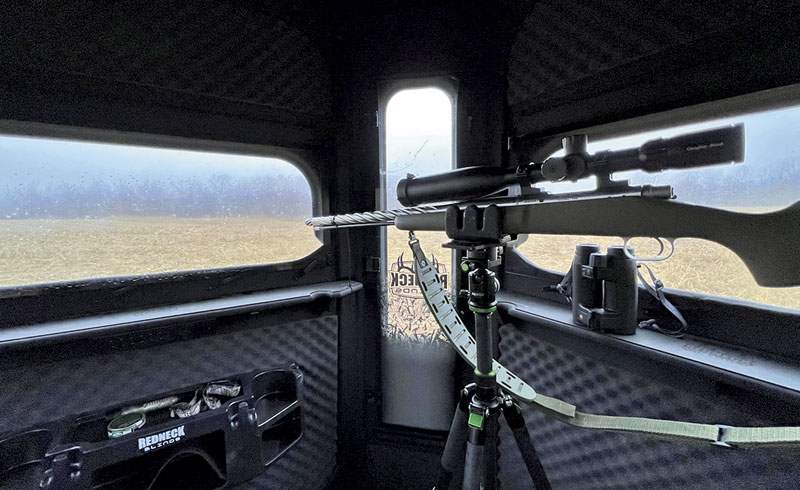
No matter what you call them, they are dangerous and destructive and this malicious invasive species is out of control in Louisiana as well as some other states. It’s one creature nobody stands up and says, “Wait. Leave them alone…they were here first.”
The Louisiana Department of Wildlife and Fisheries says feral hogs are found in all 64 parishes in Louisiana, and Louisiana’s feral hog population was estimated at 700,000 several years ago. With increased attention on these pesky wild porkers and an emphasis on rooting them out, estimates today are more like 900,000 — possibly up to a million. And they aren’t just in the woods. They come out in the fields and even roam populated rural neighborhoods in numbers that are hard to believe.
They are rarely seen because they only come out at night, and then they are cautious of any human activity, which causes them to retreat to the depths of the woods and somehow disappear until their next raid. The evidence they leave behind, though, is indisputable. They leave rooted up areas of the earth from wheat fields to acorn flats to people’s yards that literally look like a series of small bombs went off.
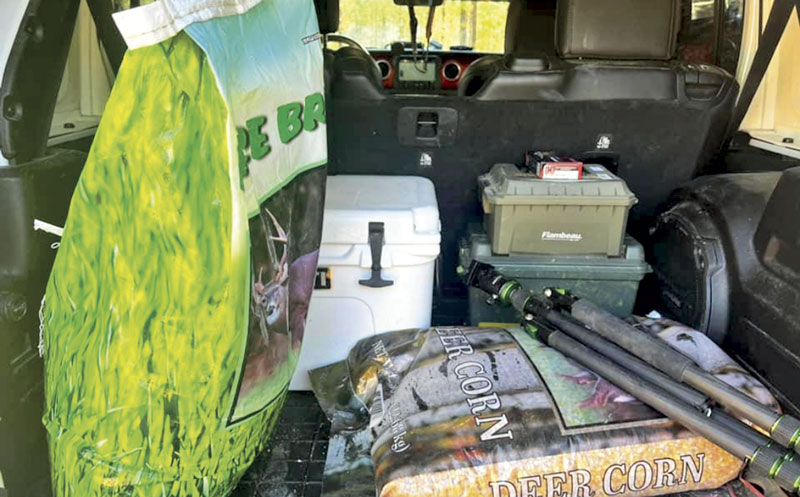
Minimal professional attention
With only minimal attention from professional wildlife agencies, many sportsmen and landowners are taking matters into their own hands. They’re shooting them with night vision. They’re trapping them and putting them down. They’re hunting them down with dogs. And scientists are even trying to figure out a safe way to poison them.
“Several years ago, Brian Tucker and I traded out some of our Tiger Bend deer stands with Hogg Boss for a hog trap,” said Peyton McKinnie of Marion, a Deputy with the Union Parish Sheriff’s Office. “They were a fairly new thing. We let that thing sit there and I walked by it hundreds of times. I had no real desire to set it up and trap hogs. But people kept talking about hogs tearing up the deer woods, tearing up their fields and farms and even getting into town and causing destruction around us. We figured we just had a couple of sounders on our hunting club, but when we set the traps up and got the video cameras up, oh my gosh, they were everywhere.”
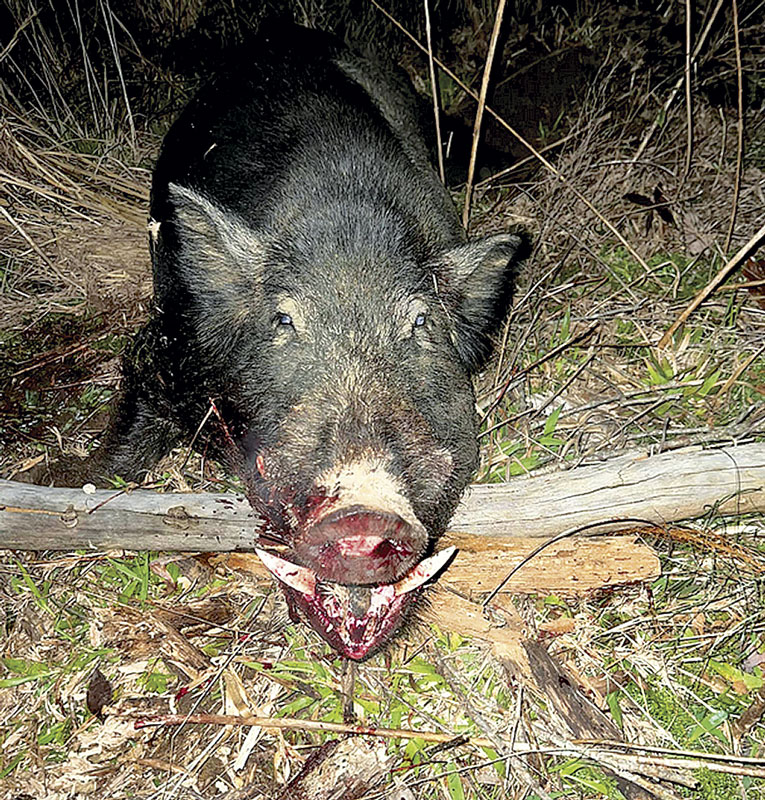
The same thing happened in other areas they went with the traps, and as their success rate grew, others joined in. There’s no season and the hogs aren’t going anywhere. Now, people like McKinnie and one of his hog hunting partners, Caleb Gates, enjoy taking out the hogs more than they like deer hunting. And that’s saying a lot. It’s fun, and it’s badly needed.
“I tell you what, there are so many of them that it’s kind of gotten to be like a video game,” he said. “You bait up an area and they start coming to it. You set up the trap, then be patient and they’ll come back. You can sit and watch them on your phone through the video feeds. Then, when the whole sounder gets inside, you lower the gate remotely and you’ve got them.”
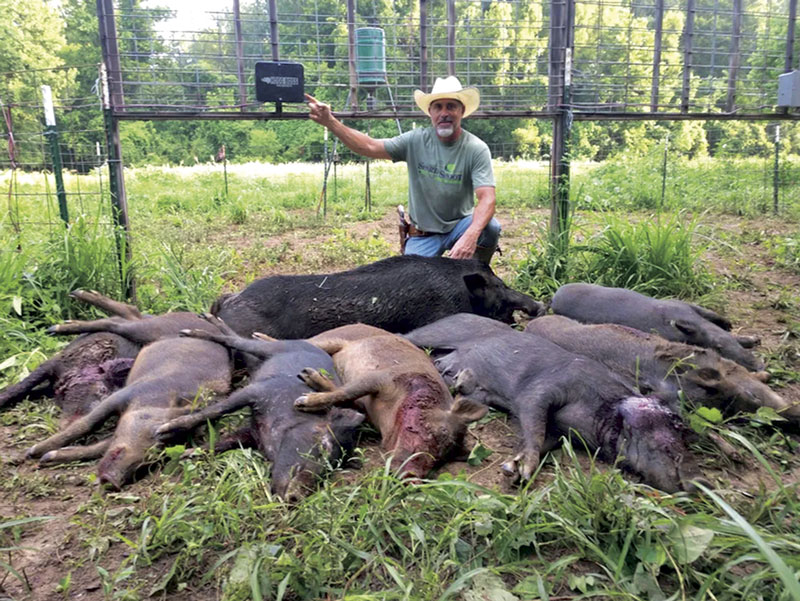
Real work begins
Once that happens, the real work begins. The hogs are killed and then disposed of. Usually McKinnie and his friends take them to deer processors and there is a long waiting line for people wanting the meat. In the heat of the summer, the hogs are full of parasites and are just nasty, so they dispose of them in the woods.
McKinnie said private trappers are growing in numbers and doing a good job, but they get no help from anybody. It’s expensive to buy traps and bait them and it certainly takes a lot of time. He’s hoping one day the state, perhaps the LDWF, will get serious enough about it to offer some bounty like they do for nutria and really make a dent in the population instead of letting it go hog wild.
To bait the traps, McKinnie and others use corn mixed with rice bran and then some sort of sweetener, like Delta Magic or even plain sugar. The amount of what McKinnie calls “dessert” is limited, so the hogs all rush in to the feed pile at the same time, trying to get as much of the goodie as they can.
Hog awareness is growing faster than anyone realizes. When legendary giant boar, “Mr T”, was killed by Matt Talbert of Sterlington, it was featured in newspapers and magazines like Louisiana Sportsman, where it became one of the top 10 viewed posts on LouisianaSportsman.com in 2021.
Scientists, like those at the LSU AgCenter and the LSU Department of Chemistry are working on a bait and delivery system to help reduce the population of feral hogs.
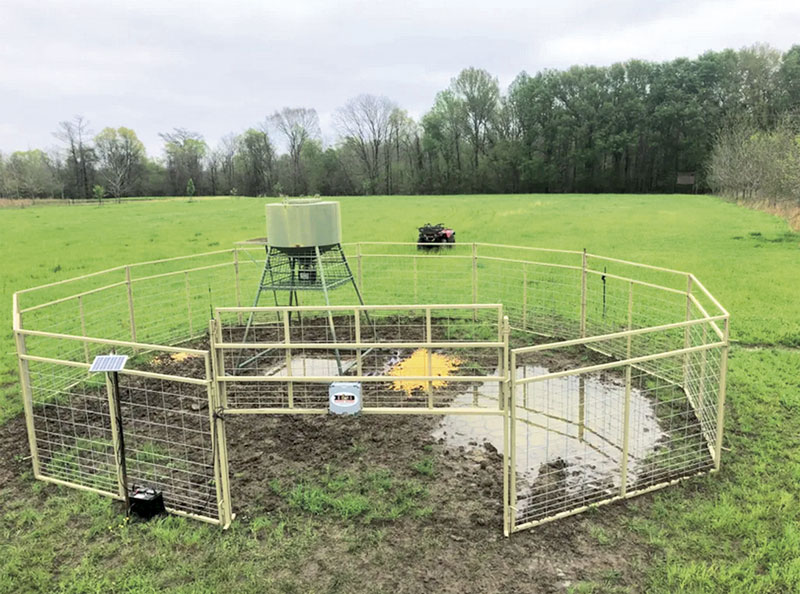
Developing kill pills
Glen Gentry, LSU AgCenter feral hog specialist, and John Pojman, a chemistry professor at LSU, have been working for several years on perfecting a bait and delivery system that will kill feral hogs, but minimize risk to off-target animals. Researchers have to develop a formula that is more attractive to hogs based on features such as smell and texture than it is to other animals such as deer or raccoons.
Ironically, researchers are using sodium nitrite, a common food additive in products such as bacon, which is lethal to pigs at fairly low levels. The problem with sodium nitrite is that it breaks down when it comes into contact with moisture. And it gives off a chlorine-like odor that pigs don’t like.
Scientific solutions are hard to develop, plus the approval process is time consuming on steroids. All the while, sow hogs are reproducing faster than rabbits. And then, there are some people who voice concern that all the hogs may die. Gentry has a quick answer for them.
“People are concerned when some kind of new control method that’s going to come on, the pigs are going to disappear,” Gentry has said. “We’ve been poisoning rats for 50 to 60 years. We still have rats.”
Building a better “mouse trap”
Kory Gilbert of Sterlington never knew much about feral hogs until he joined a hunting club in St. Francisville and they were everywhere. He had some predator trapping experience and club members challenged him to come up with a solution.
He knew if he could build a trap and incorporate video technology into it, he’d have a solution. Working for months in his kitchen, he developed a drop gate that was activated by cell phone signal as the trap owner watched what was happening on a live video feed.
It enabled 10-15 hogs to be caught at once instead of two or three like old trap systems. It was the first commercial hog trap system manufactured in Louisiana.
“I had worked on the idea for a long time and when I finally had that ‘Edison moment’ and the thing worked, giving me total control, I knew I had something. Today we have Hogg Boss gates in all 50 states.”
Hog problems are bigger than they’ve ever been and trapping is bigger than it has ever been. While people trap all year long, the peak season is in the fall when people are getting back in the woods and see how many hogs there are. Then, the period in January when deer seasons are ending, people are still mad at them and want to get rid of them.”
Big boys are elusive
Tucker, who also hog hunts with McKinnie, said there’s one thing that is tough to do with traps.
“The big boars just don’t come to traps easily,” Tucker said. “In fact, we don’t see many of them, especially the older ones with big tusks, on the camera or video. But the good thing is when we clear out most of a sounder, there are some guys that can come in there and hunt singles with a gun and they can get those big boys.”
Tucker said on a recent set, they caught a bunch of hogs and weren’t even seeing any more, but a friend who gun hunts went out and killed four big boars.
“They just don’t hang out with the rest of the mommas and babies much and they sure don’t like to come to a trap,” Tucker adds. “One thing that’s great about the traps, though, is it keeps you out there all year long. You can’t hunt anything else, but you can hunt the hogs and it keeps everybody in the club involved and engaged. They all see the pictures, too.”
It would seem like with all the hunters and people in the woods plus all the hogs, there would be more run-ins, but Tucker said that just doesn’t happen. Like any animal, if there’s a way out, they’ll take it. And they see us before we see them, he said. Also, where they hide when people can’t find them is a mystery.
“I think they just lay up in big thick tops or brush,” he said. “They know the places that people don’t go.”

